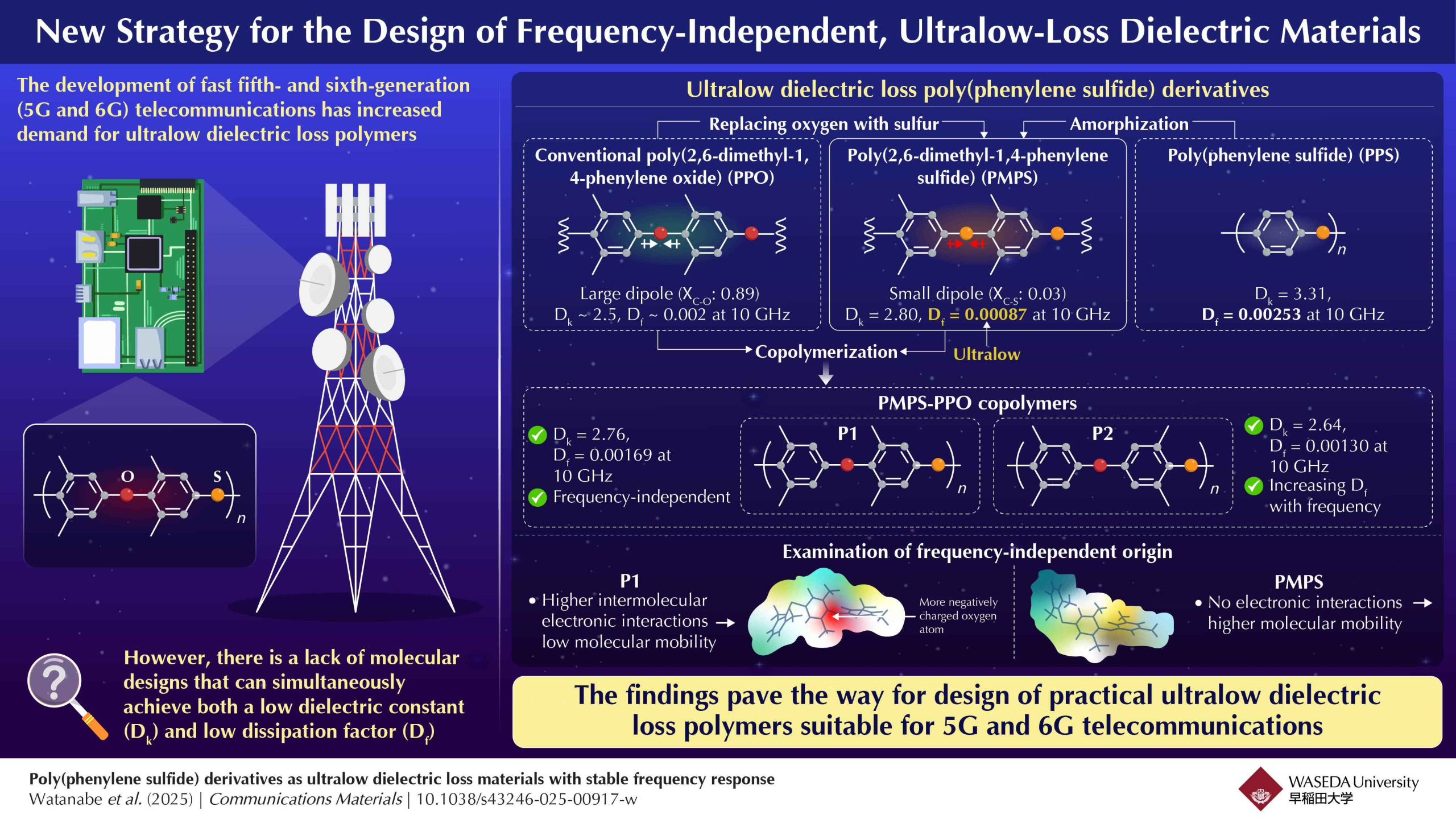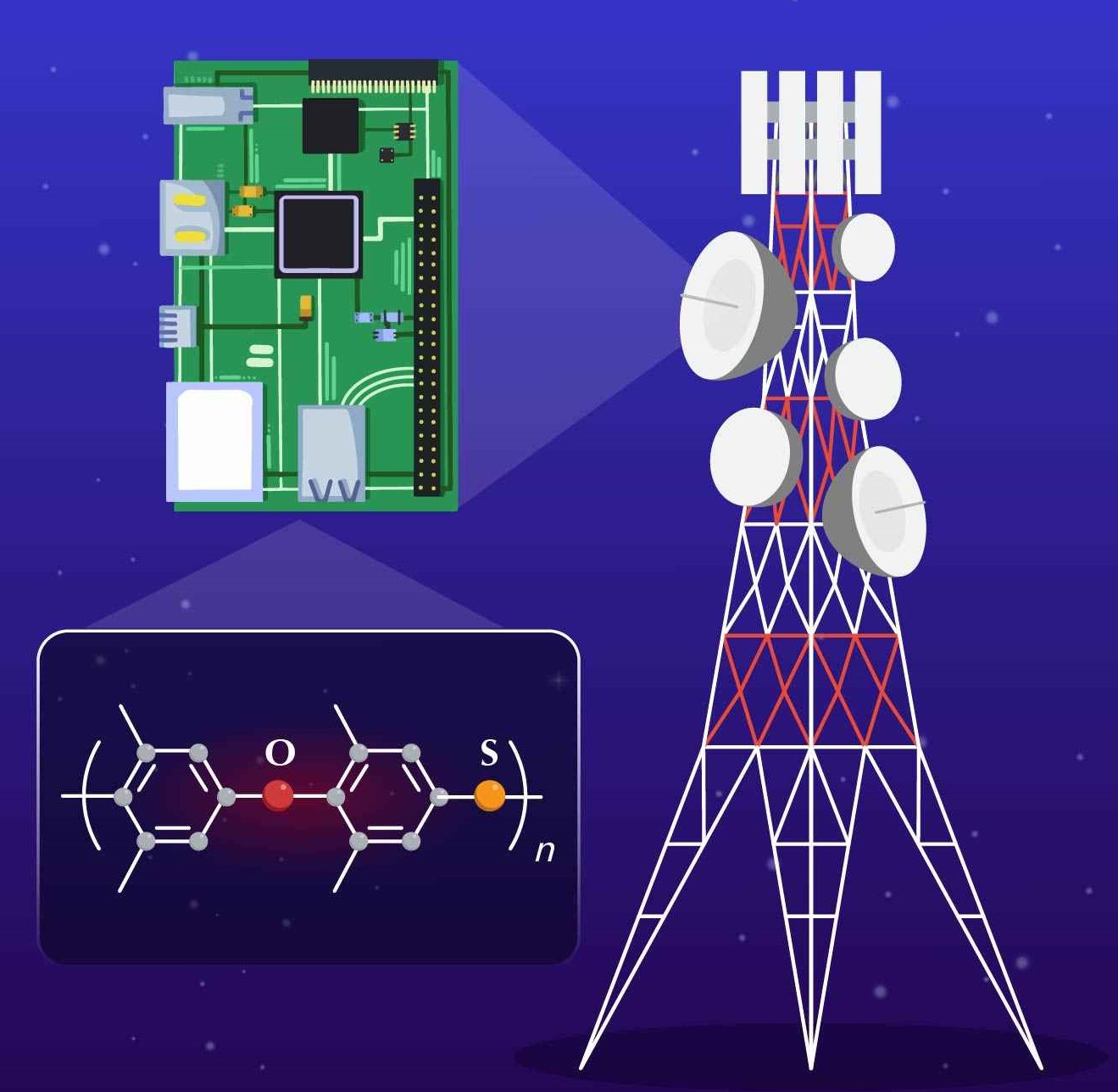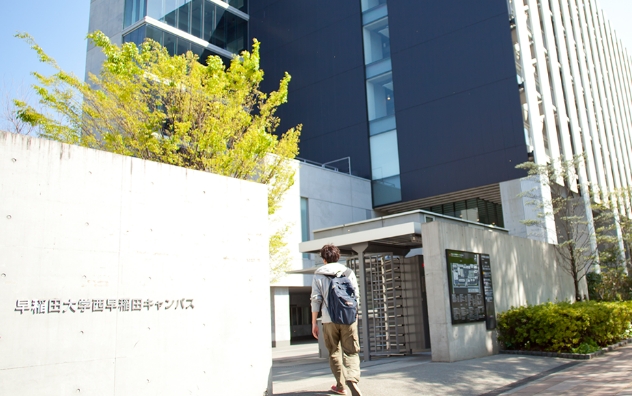New Polymer Designs for Beyond-5G Telecommunications
Thu, Oct 2, 2025-
Tags
New Polymer Designs for Beyond-5G Telecommunications
Researchers develop a new class of polymers with ultralow dielectric loss, with the potential to power future high-speed telecommunications
The demand for polymer-based dielectrics with a low dielectric constant and a low dissipation factor is rising, owing to the expansion of 5G and 6G telecommunications networks. However, polymer designs that satisfy both requirements have been difficult to realize. Now, researchers from Japan have developed a new family of ultralow dielectric loss polymers, presenting a new strategy for developing next-generation dielectrics that are suitable for future beyond-6G telecommunications.
 With the rollout of fifth-generation (5G) telecommunications networks and 6G looming on the horizon, the demand for advanced materials that can handle high-frequency signals is rising rapidly. These systems use electromagnetic waves ranging from tens to hundreds of gigahertz (GHz), where signals are highly sensitive to transmission loss, interference, and distortion. To address these issues, scientists and engineers rely on special insulating materials, known as dielectrics, which help guide signals with minimal loss.
With the rollout of fifth-generation (5G) telecommunications networks and 6G looming on the horizon, the demand for advanced materials that can handle high-frequency signals is rising rapidly. These systems use electromagnetic waves ranging from tens to hundreds of gigahertz (GHz), where signals are highly sensitive to transmission loss, interference, and distortion. To address these issues, scientists and engineers rely on special insulating materials, known as dielectrics, which help guide signals with minimal loss.
Polymer-based dielectrics are particularly attractive. However, for high-frequency operation, they need two key traits: a low dielectric constant (Dk) and a low dissipation factor (Df). This is important for minimizing signal transmission loss in the GHz frequency range. Until now, polymer designs that simultaneously achieve both a low Dk and a low Df have been difficult to realize.
Addressing this challenge, a research team led by Professor Kenichi Oyaizu from the Department of Applied Chemistry, Research Institute for Science and Engineering at Waseda University in Japan has developed a new class of poly(phenylene sulfide) (PPS) derivatives with ultralow dielectric loss. “Based on our previous research on high refractive index polymers, we hypothesized that replacing oxygen with sulfur in certain polymers, such as PPO, could significantly reduce the dissipation factor,” explains Oyaizu. “Using this strategy, we succeeded in developing a new class of ultralow dielectric loss polymers.” The study, which also had contributions from Junior Researcher Seigo Watanabe of Waseda University, was published in Volume 6 of the journal Communications Materials on August 16, 2025.
Poly(2,6-dimethyl-1,4-phenylene oxide) (PPO) is currently known to offer the best balance of a low Dk and Df. By replacing oxygen with sulfur in PPO, the researchers created poly(2,6-dimethyl-1,4-phenylene sulfide) (PMPS), a derivative of PPS. They studied the dielectric properties of PMPS at three different frequencies: 10 GHz, 40 GHz, and 80 GHz, and compared them with those of PPO. To further understand the role of sulfur, they also synthesized and studied two of its copolymers with PPO, referred to as P1 and P2, featuring an alternating sulfur and oxygen sequence.
PMPS achieved a Dk of 2.80 and an ultralow Df of 0.00087 at 10 GHz, significantly lower than that of PPO. This improvement arises from the higher polarizability and smaller dipole moment (the measure of negative and positive charge separation) of the carbon–sulfur bond in PMPS compared to the carbon–oxygen bond in PPO. The copolymers also demonstrated excellent properties: P1 showed a Dk of 2.76 and Df of 0.00169, while P2 demonstrated a Dk of 2.64 and a Df of 0.00130. A comparison of the properties of PPO, PMPS, and its copolymers indicates that increasing sulfur content is a promising strategy for reducing Df.
The researchers also studied the frequency dependence of these properties over the 10–80 GHz range. While Dk values of all polymers did not change, Df showed an increasing trend for PPO, PMPS and P2. Interestingly, P1 retained an almost constant Df, achieving the lowest value among all polymers at 80 GHz. This was due to the reduced motion between its molecules. As Oyaizu explains, “The alternating sulfur-oxygen sequence in P1 and P2 results in increased intermolecular interactions, which reduce molecular mobility. Moreover, P1, specifically has a higher resistance to molecular rotation. Together, this resulted in a near-constant Df across a wide frequency range.” Combined with strong thermal stability, this makes P1 a practical insulating material for future high-frequency telecommunications.
“Our study presents a breakthrough concept of replacing oxygen with sulfur for the design of ultralow dielectric polymers,” concludes Oyaizu. “We believe this is a first step toward practical materials that can power telecommunications beyond 5G.”
Reference
Title of original paper:Poly(phenylene sulfide) derivatives as ultralow dielectric loss materials with stable frequency response
DOI: 10.1038/s43246-025-00917-w
Journal: Communications Materials
Article Publication Date: August 16, 2025
Authors: Seigo Watanabe1,2, Shuma Miura2, Tomohiro Miura2, Yoshino Tsunekawa2, Daisuke Ito3 and Kenichi Oyaizu 1,2
Affiliation:
1Research Institute for Science and Engineering, Waseda University, Japan
2Department of Applied Chemistry, Waseda University, Japan
3Daicel Corporation, Japan
About Professor Kenichi Oyaizu Waseda University
Dr. Kenichi Oyaizu is currently a Professor in the Department of Applied Chemistry at Waseda University. He obtained his PhD from Waseda University in 1995. His research focuses on the development of polymers for electron-transfer-based organic electronics and for wet-type energy storage, transport, and conversion devices. He has published approximately 300 papers on these topics. Notably, he received the Award for Encouragement of Research in Polymer Science from the Society of Polymer Science, Japan, in 2001 and the Chemical Society of Japan Award for Young Chemists in 2002.














